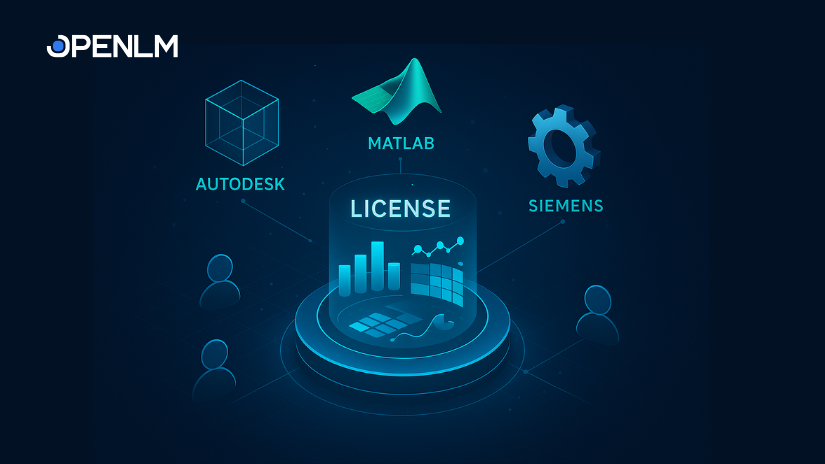Autodesk is determined to move all its customers from using the network licensing model to a subscription or named user model. It is important that a comprehensive cost/benefit analysis is done before deciding what action to take, even if top management is pressurizing for a resolution to the situation.
While the network model is generally better for most organizations, there is no one-size-fits-all answer to the dilemma, some companies might even benefit from switching to the named user model.
What would be a good methodology to consider the switch? We could apply a two-stage process.
Table of Contents
ToggleStage One, Identify your Baseline.
- Know your current maintenance costs.
- Count the number of unique users that you currently have
- Multiply the subscription cost by the number of users to understand what your annual cost will be.
Compare the price per year. If the subscription cost is higher than the current perpetual cost, refuse to upgrade. The difference you see now is the MINIMAL amount of money you can save!
If the subscription cost is equal to or lower than the current perpetual cost, move to the next stage that is checking if you currently utilize your license correctly and that you have not been missing out on potential savings.
Based on our experience, depending on the efforts one is willing to invest it is possible to get 100% more usage from the existing license pool, sometimes more. This would mean that you could decrease your licensing costs by 50% or more. In order to achieve this, you will need to have a software tool that will help you to optimize your license usage. The better the software you employ, the higher savings you will achieve.
Stage Two: Identify Where You can Optimize Usage
There are two main areas that require attention:-
- your license server configuration
- how both dedicated and network licenses are being utilized
License servers – the more license servers you have, the less optimized your configuration. License server consolidation is one of the most efficient ways to improve access to license pools. In the case of multi-nationals, it is not always possible to consolidate all the servers into a single centralized pool, because the licensing agreements were entered into with regional subsidiaries or partners of Autodesk and they are treated as separate entities. Even so, there will be at least a few consolidations possible, which has additional benefits in that the number of license servers is reduced and the complexity of managing the licenses is reduced as well.
Current License Utilization – Dedicated Licenses
A comprehensive audit of which licenses are being used and by whom is the next step. In the previous step we paid attention to the concurrent license pools. There is a good possibility that there are quite a few dedicated licenses on site. Sometimes granting a user a dedicated license makes sense, where that user spends most of their time using AutoCAD or Revit, for example. What often happens is that a dedicated or named user license was obtained for a short-term need, like a special project, and the user no longer uses it to the extent that a dedicated license is necessary. Going forward, such users can access licenses from the concurrent pool. As you are still evaluating whether subscription licenses will work for you, you should leave these licenses as is for now, bearing in mind the cost savings of dispensing with them.
Current License Utilization – Network Licenses
Once the license pools have been reconfigured, it is time to check what the actual utilization looks like. Data must be gathered on:-
- Who is consuming the license?
- On which workstation is it being used?
- Where there are several software versions, which license is being used?
- What time of day is the license being used, which aids in understanding usage peaks and troughs?
- How long is the license session between access and release of the license?
If you are relying on Autodesk’s license manager software, you may find that this information is not readily available to you. This is where a dedicated license management software tool becomes useful. When you want to take the next step and start optimizing usage, the tool will quickly become worth its weight in gold.
However, just by using the basic information you have gathered, you will have identified areas for further investigation, such as:-
- Should a user have access and why are they using the software? Maybe they just need a viewer to see a drawing, they are not actually drafting or designing
- Why is the server underutilized?
- Why are you getting denials when the server is not being heavily utilized?
- Are users who book out a license for the whole day actually using the tool all day, or is it idle most of the time?
- Are there users who do not release the software when they are finished, they keep it booked out overnight.
Autodesk’s license manager will definitely not give you all this information. You need a tool like OpenLM’s License Parser to understand what is really happening. Below is an example of reporting on license utilization from one of OpenLM’s customers.
AutoCAD license utilization at an OpenLM customer
This chart shows how the licenses are utilized realtime. You can see from this graph that, although 70 licenses have been purchased, this could be reduced to 30 licenses without any significant change in quality of service.
First Conclusions
By this stage, you will already have a clearer view on whether subscription licenses are cost-effective for your organization. You might already find that the costs outweigh the benefits. This is even before you have started on your license optimization. You might even have identified that the pros and cons are pretty evenly balanced at this stage. It is premature to decide at this stage. We recommend that you implement some changes that will optimize utilization of your license pool(s) further. Once you have done this, you will get a clear view of your Autodesk license future.
Some Changes that will Reduce License Waste
The changes described below require targeted reporting to implement them. You will not be able to extract this data from your Autodesk license manager. The cost savings that you will achieve will more than pay for good license management software that is written to satisfy the customer’s needs rather than the vendor’s requirements.
Introduce Chargebacks
If you do not charge licensing costs back to the respective business units that use the licenses, even your best managers are pretty relaxed about usage. Start charging back to cost centers and see how things change. The license costs will affect the bottom line for most managers, and they will start monitoring usage and cutting down on unnecessary use. You will be able to make this easier for them by providing reporting on idle licenses within their cost centre, which is part of the next change.
Actively Manage Idle Licenses
If you have not been able to manage idle licenses before, you will find that most users are very lax about checking a license back when they are not using it. You need reporting that will alert you to idle licenses. You can either “harvest” these licenses manually, or automate harvesting to occur after a certain elapsed number of idle minutes. Below are several reports available in OpenLM on idle licensing, from selected customer sites.
List of idle licenses and elapsed time
It is easy to see from the display above which licenses need to be reclaimed. You also have the option to close the application or just remove the license. It may occur that you have a peak period and licenses are in short supply. You may decide to close the licenses for a low priority group to free them for another group who have top priority. However, this is not necessary in this case; here are 10 licenses you can harvest right away:-
Licenses that have been idle for over an hour
You can even interrogate usage on a per license basis. Here is an example below.
The effect of harvesting is that your actual licensing utilization will drop quite dramatically. You will now be getting a far more accurate picture of your Autodesk license requirements. By now you should have discovered that you have more network licenses than you need for the actual current usage, like our customers who had 70 licenses but only needed 30. You might even have discovered “shelf” licenses, licenses that are completely unused, but you are still renewing the license and maintenance agreements for them. You will also have identified serial offenders who “hog” licenses and can apply some change management.
You are now ready to make an evaluation of whether you should move to Autodesk subscription licenses or not.
Will Subscription Licenses Work for Us? Some Assumptions
- There is huge industry pushback on the move to subscription licenses. We are not alone.
- The different features and products that are available in the subscription do not affect the decision-making process, we are deciding at vendor level.
- We would like to keep the same service level we have now.
- This was a preliminary exercise. We can optimize even further.
- There might be a case for a few subscription licenses (e.g. full-time draughtsmen)
With the data we have collected from our investigation, we can make an informed and objective decision on whether adopting subscription licenses and retiring concurrent licenses will work for us or not.
Graphical analysis of network licenses compared to subscription
- In the graph above, the blue line is the named license requirement, where each user needs a subscription. This is a one-to-one relationship and creates a 45% angle.
- The red line is the best case for concurrent license utilization. Some customers have even achieved a ratio of 1:5 licenses/users, but the average is probably 1:1.5
- The orange line is a more realistic adjusted network license utilization.
- Both the red and orange lines will be unique to your organization.
- The saving exists in the area between the blue and the orange lines and is represented by the green arrow.
What are Autodesk offering?
The subscription option is not cheap- the solution is a package with multiple products, which you may not need and is almost €4000 per user. Even the discounted cost per user for 5 years is almost €15 000.
Subscription multi user – This is a subscription option where the user does not log in using his login credentials (user name and password), but logs in via the network and the license manager authenticates him,which is more flexible than the named user alternative.
Keeping your network licenses – Autodesk is increasing your maintenance costs over the next few years, which will erode the value of your concurrent pool – if you decide to continue paying maintenance costs. The original license purchase is a sunk cost and does not affect the calculation.
Market Forecast
Another factor that is vital in your considerations is your projections on your organization’s growth over the next few years.
Optimistic Scenario
The company will continue to perform well, new projects will come in regularly and we will need more licenses to support our growth. We have the following options:-
Subscription – we will need to buy subscription per user. – no other options
Network – squeeze more usage out of the existing license server (possible!!) OR buy some additional subscriptions.
Pessimistic Scenario
Economy is depressed -the company has lost projects, needs to scale back and needs less licenses –
Subscription – In the first three years, giving up any license will cause a loss of the discount benefit on subscriptions. After the first three years, giving up subscriptions has no effect.
Network – can reduce the usability and keep for better times and consider stopping maintenance in the short-term.
Other Considerations
You need some additional modules that are included in the latest industry package or the “one” Autodesk, but not in your current agreement. In this case consider buying a few subscriptions, without changing tour network pool.
What Most Customers have Told us
We stayed with our network agreement and purchased few subscriptions by swapping a few concurrent licenses to take advantage of the discount. We now have the benefit of having a hybrid license environment. We allocated the named licenses to a handful of power users and let the majority of users rely on the network licenses – we still have the benefit of the concurrent pool which costs less because of the licenses we converted to subscription licenses.
Even with a clear view of your actual current usage, this is not an easy decision to make, which is why most customers have hedged their bets by opting for a hybrid model.










